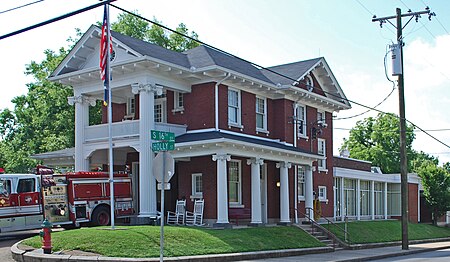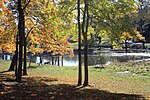Holly Street Fire Hall
Buildings and structures completed in 1914Colonial Revival architecture in TennesseeFire stations on the National Register of Historic Places in TennesseeMiddle Tennessee Registered Historic Place stubsNational Register of Historic Places in Davidson County, Tennessee

The Holly Street Fire Hall, at 1600 Holly St. in Nashville, Tennessee, was built in 1914. It was listed on the National Register of Historic Places in 1982.It is a red brick two-story fire station designed with elements of Colonial Revival and/or Classical Revival style by Nashville's first city architect James Yeaman to fit into its neighborhood, a residential area with houses having columns and porticos.The fire hall sustained extensive damage during the Nashville 2020 Tornado which struck around 12:45 AM on March 3, 2020. The fire hall lost its roof and many windows.
Excerpt from the Wikipedia article Holly Street Fire Hall (License: CC BY-SA 3.0, Authors, Images).Holly Street Fire Hall
Holly Street, Nashville-Davidson East Nashville
Geographical coordinates (GPS) Address Nearby Places Show on map
Geographical coordinates (GPS)
| Latitude | Longitude |
|---|---|
| N 36.175 ° | E -86.741666666667 ° |
Address
Holly Street 1604
37206 Nashville-Davidson, East Nashville
Tennessee, United States
Open on Google Maps





